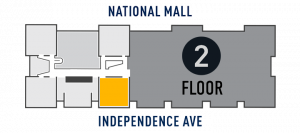Launched by NASA in 1962, Relay 1 was one of several satellites placed in orbit in the decade after Sputnik to test the possibilities of communications from space. Relay 1 received telephone and television signals from ground stations and then transmitted them to other locations on the Earth's surface. The satellite relayed signals between North America and Europe and between North and South America, and it also monitored the effects of radiation on its electronics. In conjunction with the Syncom 3 communications satellite, Relay 1 transmitted television coverage of the 1964 Olympics in Japan.
This prototype of Relay 1 is covered with solar cells. The antenna on top is for receiving and transmitting communications signals; those at its base are for telemetry, tracking, and control. In orbit, Relay used spin-stabilization to orient the antennas to communicate with Earth.
NASA transferred this artifact to the Museum in 1967.
Display Status
This object is on display in One World Connected at the National Air and Space Museum in Washington, DC.

Object Details
Country of Origin
United States of America
Type
SPACECRAFT-Uncrewed
Manufacturer
RCA Astro Electronics
Dimensions
Overall: 4 ft. 4 in. tall x 2 ft. 6 in. wide (132.1 x 76.2cm) Weight: 170 lbs
Materials
Aluminum, copper, plastic, glass, steel, adhesive, synthetic fabric, epoxy, solder
Alternate Name
Relay 1 Communications Satellite
Inventory Number
A19670216000
Credit Line
Transferred from NASA
Data Source
National Air and Space Museum
Restrictions & Rights
Usage conditions apply
For more information, visit the Smithsonians Terms of Use.

